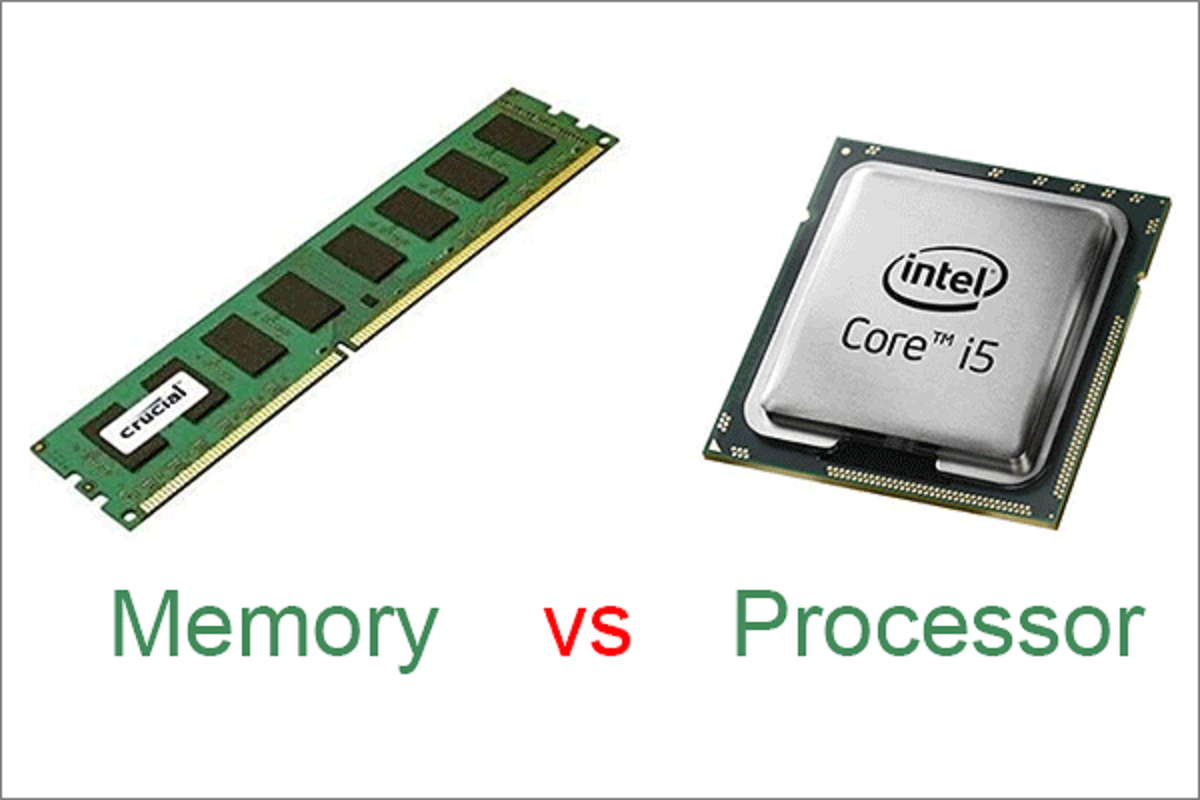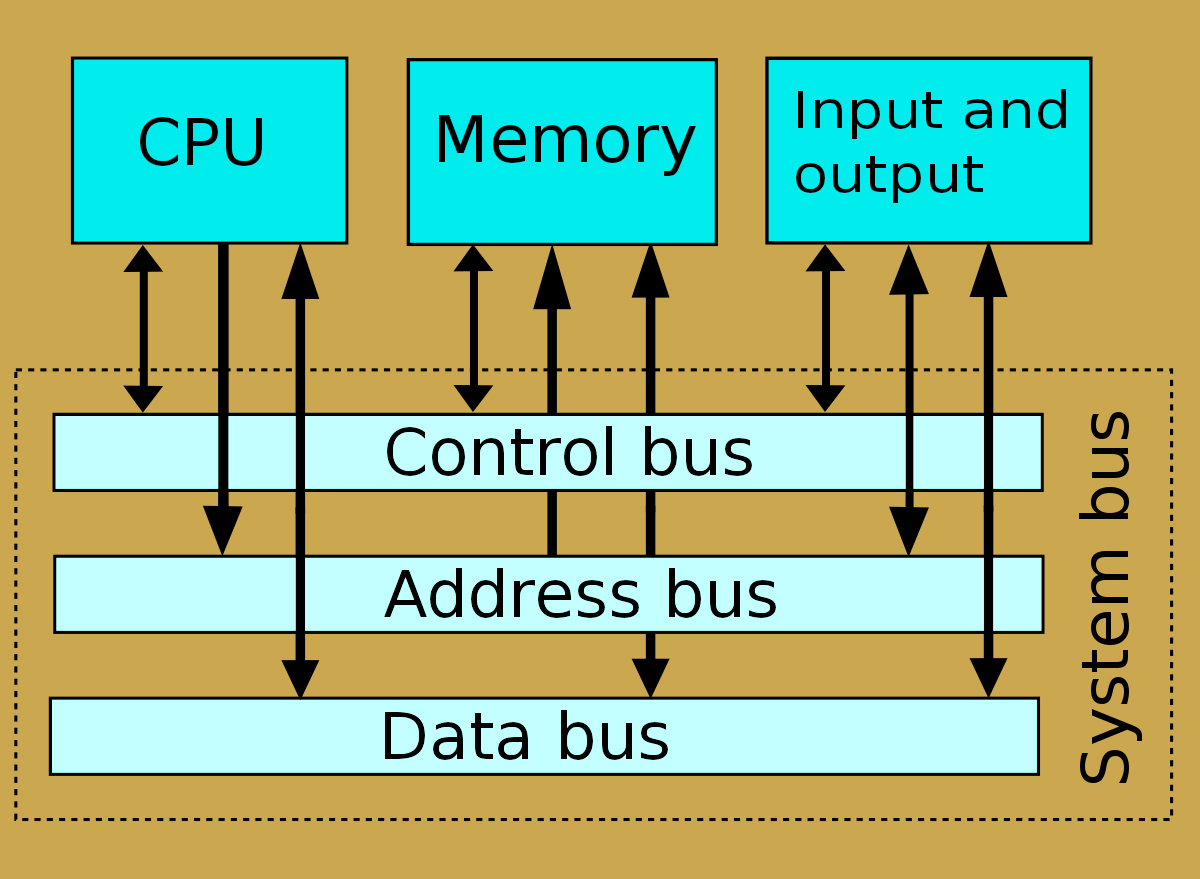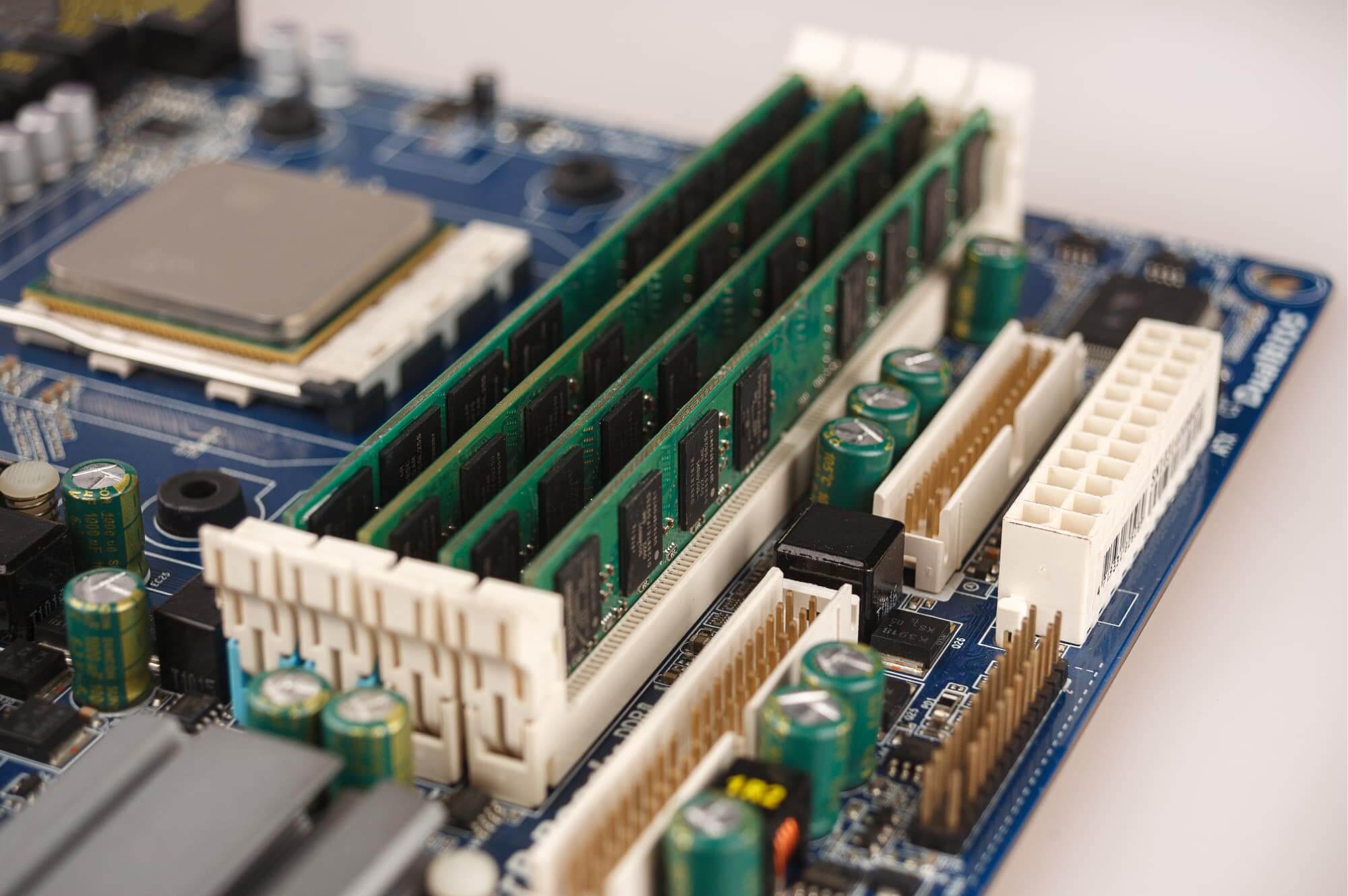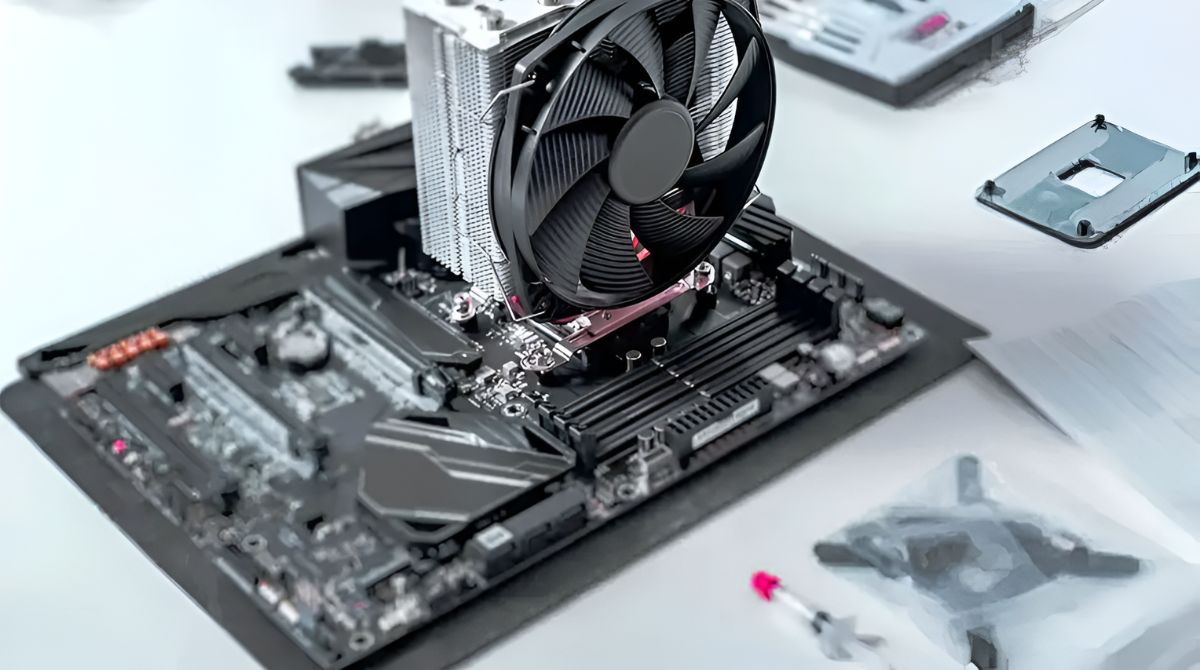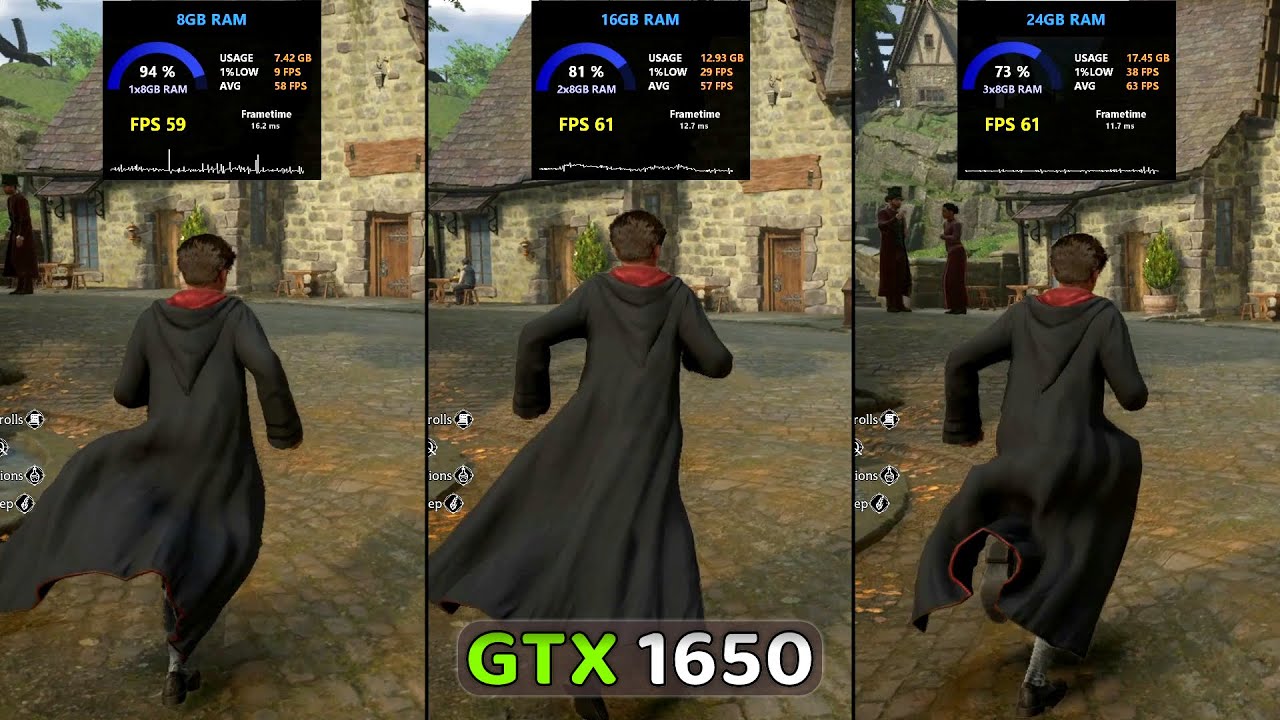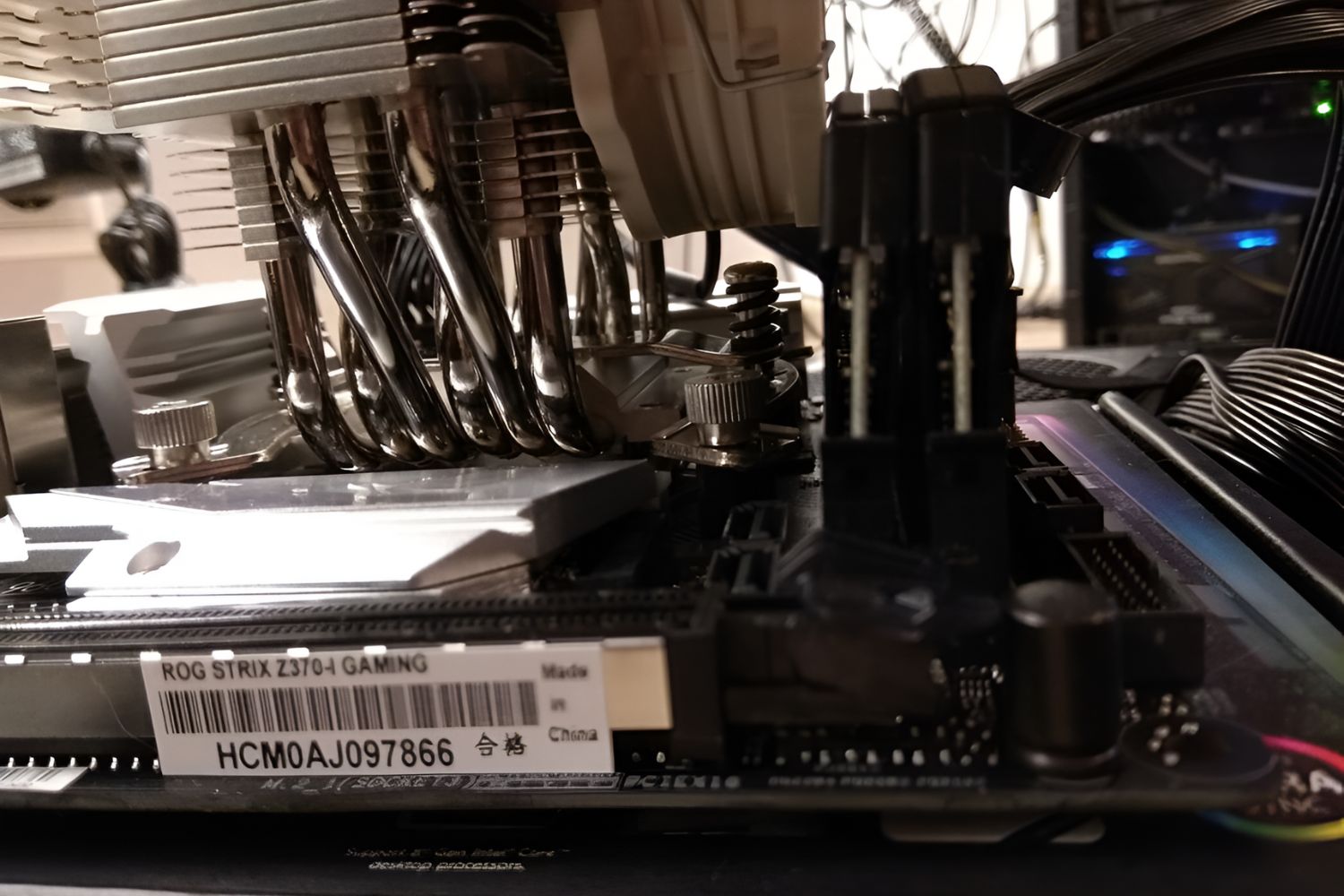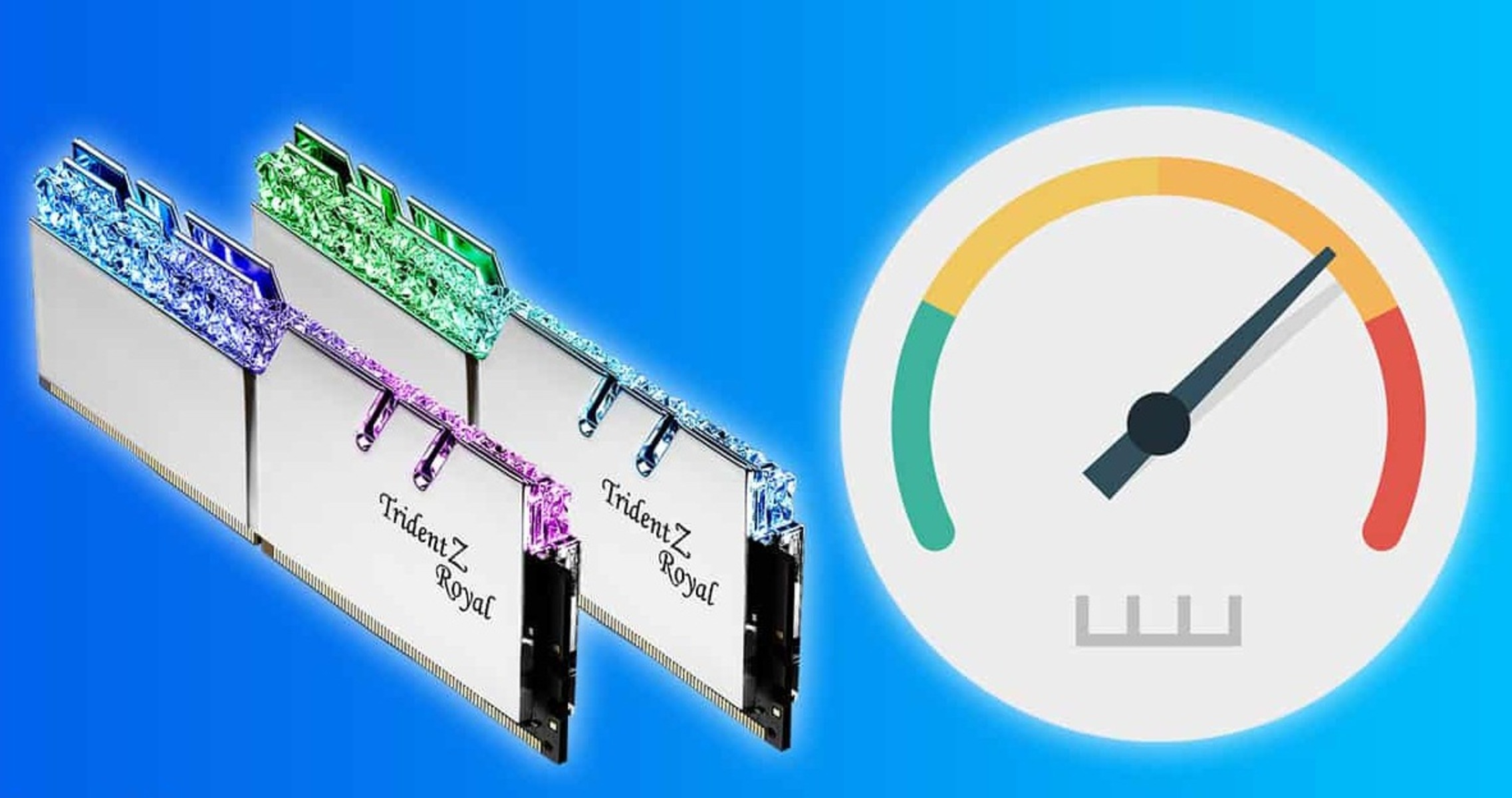Introduction
The central processing unit (CPU) and random access memory (RAM) are two essential components in a computer system. They work together to perform and manage the various tasks and operations of a computer. Understanding how the CPU and RAM work together is crucial for anyone seeking to comprehend the functioning of a computer and optimize its performance.
The CPU, often referred to as the brain of the computer, is responsible for executing instructions and processing data. On the other hand, RAM, also known as the computer’s memory, provides the CPU with the necessary space to store and access data quickly. Together, these two components form the backbone of computing operations.
In this article, we will delve into the intricacies of the CPU and RAM, exploring how they function individually and collaboratively. We will discuss the vital roles they play in a computer system and their significance in determining overall performance. Additionally, we will touch upon the factors that affect CPU and RAM performance and the options available for upgrading these components.
By the end of this article, you will have a comprehensive understanding of the interplay between the CPU and RAM and how they contribute to the overall functioning and speed of a computer system. So, let’s dive into the world of CPUs and RAM and unravel the mystery behind their operation.
What is a CPU?
The central processing unit (CPU) is the primary component of a computer that carries out instructions and performs calculations. It can be thought of as the brain of the computer, responsible for executing tasks and controlling the overall operation of the system.
The CPU consists of multiple cores, each capable of executing multiple instructions simultaneously, thus increasing the speed and efficiency of processing. These cores are designed to handle specific types of calculations, such as arithmetic, logic, and data movement.
Modern CPUs are composed of billions of transistors packed onto a single chip. These transistors work together to interpret and execute instructions, which are represented as binary code. Through a series of complex operations, the CPU fetches instructions from the computer’s memory, decodes them, executes them, and then stores the results back in memory.
The CPU acts as the intermediary among the various hardware components of a computer, including the memory, storage devices, and input/output devices. It coordinates the flow of data between these components, ensuring that instructions are executed in the correct order and at the appropriate time.
The performance of a CPU is measured by factors such as clock speed, the number of cores, cache size, and architecture. Clock speed refers to the number of calculations a CPU can perform in a given period. A higher clock speed generally corresponds to faster processing.
To sum up, the CPU is the central processing unit of a computer, responsible for executing instructions, performing calculations, and coordinating the flow of data between different hardware components. Its architecture, clock speed, and core count play significant roles in determining the overall performance of a system.
What is RAM?
Random access memory (RAM) is a type of computer memory that provides the CPU with fast and temporary storage space to hold data and instructions while they are being processed. Unlike permanent storage devices like hard drives or solid-state drives, RAM is volatile, meaning it loses its data when the computer is powered off or restarted.
RAM serves as a bridge between the CPU and the computer’s storage devices, allowing for quick data access and retrieval. It stores the data that the CPU needs for immediate processing, such as the operating system, applications, and files that are currently in use. The CPU can read and write data to and from RAM at a much higher speed than it can from other storage devices.
RAM is typically made up of small integrated circuits, known as memory chips, which are organized into modules. These modules can be easily inserted into the computer’s motherboard, providing additional memory capacity.
The size of the RAM determines the amount of data that can be stored and accessed by the CPU. A higher amount of RAM allows for smoother multitasking and the ability to handle more complex and memory-intensive tasks. It helps speed up the overall performance of the computer by reducing the need to rely heavily on slower storage devices.
RAM operates at a faster speed than other storage devices but is slower than the CPU’s cache memory. To bridge this speed gap, the CPU frequently moves data between the cache and RAM to ensure that instructions and data are readily available for processing.
In summary, RAM is a volatile form of computer memory that provides the CPU with fast and temporary storage space. It allows for quick data access and retrieval, reducing reliance on slower storage devices. The size of RAM directly impacts the computer’s performance, as it determines the amount of data that can be stored and accessed at a given time.
The Role of the CPU and RAM in a Computer
The CPU and RAM are two integral components that work together to ensure the smooth and efficient operation of a computer system. Each component has a unique and crucial role to play in processing data and executing instructions.
The CPU’s primary role is to execute instructions and perform calculations. It acts as the control center of the computer, coordinating the execution of tasks and managing the flow of data. The CPU fetches instructions from the computer’s memory, decodes them, and then performs the necessary calculations to carry out those instructions.
RAM, on the other hand, acts as temporary storage for data and instructions that are currently in use. When the CPU needs to access data, it retrieves it from the RAM for faster processing. The larger the RAM capacity, the more data that can be stored and accessed quickly. This allows for smoother multitasking and a faster overall computing experience.
The CPU and RAM work together in a coordinated manner. When instructions are executed by the CPU, they are temporarily stored in the RAM for quicker access. The CPU retrieves the necessary data from the RAM, performs calculations, and then writes the results back to the RAM before they are stored permanently in the computer’s storage devices.
Furthermore, the CPU and RAM collaborate to improve system performance through the use of cache memory. Cache memory is a small portion of memory that is located directly on the CPU chip. It acts as a buffer between the CPU and RAM, storing frequently accessed data and instructions. By keeping this critical data closer to the CPU, cache memory helps reduce latency and speeds up processing time.
In summary, the CPU and RAM have distinct but interconnected roles in a computer system. The CPU executes instructions and performs calculations, while the RAM acts as temporary storage for data and instructions. These components work in tandem to ensure the smooth execution of tasks, quicker data access, and improved overall system performance.
How Does the CPU Work?
The central processing unit (CPU) is the key component in a computer system that carries out instructions and performs calculations. It executes a series of steps to process data and control the overall operation of the computer.
When a computer receives an instruction, it is stored in memory. The CPU then fetches the instruction from memory and brings it into its internal storage called registers. The fetched instruction is then decoded, meaning the CPU determines the type of operation the instruction requires.
Once the instruction is decoded, the CPU executes it by performing the necessary calculations or operations. This involves manipulating data stored in registers or accessing data from memory or input/output devices. The execution might involve arithmetic operations, logical comparisons, data movement, or interactions with other components of the computer system.
After executing the instruction, the CPU may need to store the result back into memory or registers. This is known as the write-back phase. The result could be a final calculation output, an updated value, or a modification to some data or memory location.
The CPU operates using a clock signal that synchronizes its internal components and the flow of instructions. The clock speed, measured in gigahertz (GHz), determines how fast the CPU can process instructions. Higher clock speeds generally lead to faster processing, but other factors such as the number of cores and architecture also come into play.
CPU architectures are designed to support different types of instructions and operations. This affects the efficiency and performance of the CPU. Some common CPU architectures include x86, ARM, and PowerPC, each with its own strengths and targeted applications.
In summary, the CPU works by fetching instructions from memory, decoding them, executing the necessary calculations or operations, and writing back the results. Clock speeds, architecture, and the number of cores influence the performance of the CPU. Understanding how the CPU operates is crucial for optimizing system performance and developing efficient software applications.
How Does RAM Work?
Random access memory (RAM) is a type of computer memory that provides the CPU with fast and temporary storage space to hold data and instructions while they are being processed. Understanding how RAM works is essential for grasping its role in the overall functioning of a computer system.
RAM is composed of small memory cells that can be read from or written to at high speeds. Each memory cell is capable of storing a single unit of data, often measured in bytes. To access a specific memory cell, the CPU provides an address indicating the location of the desired data.
RAM operates on the principle of random access, meaning that any memory cell can be accessed directly without having to sequentially read through other cells. This allows the CPU to quickly retrieve and store data, making RAM much faster than other storage devices like hard drives or solid-state drives.
When the computer is turned on, the operating system and other essential programs are loaded into RAM. This allows for fast and efficient access to these programs, reducing the need to retrieve data from slower storage devices. Any other applications or files that are opened or created during computer use are also stored in RAM for quick access.
One of the crucial advantages of RAM is its volatility. It means that RAM loses its data when the computer is powered off or restarted. This volatile nature allows for quick and efficient memory allocation and deallocation, as RAM can be cleared and prepared for new data.
The size of RAM has a direct impact on a computer’s performance. A larger RAM capacity allows for more data to be stored and accessed by the CPU. This is especially important for tasks that require multitasking or handling large files or applications. Insufficient RAM can result in a slowdown in performance as the CPU has to rely more on slower storage devices.
RAM works in collaboration with other components of the computer, such as the CPU and storage devices. The CPU retrieves data and instructions from RAM for processing, and the results are written back to RAM before being stored permanently in storage devices.
To summarize, RAM works by providing the CPU with fast and temporary storage space for data and instructions. It operates on the principle of random access, allowing for quick retrieval and storage of data. The size of RAM plays a crucial role in determining a computer’s performance, as larger capacity enables smoother multitasking and faster data access.
CPU and RAM Interaction
The interaction between the CPU and RAM is crucial for the efficient functioning of a computer system. These two components work collaboratively to process data, execute instructions, and ensure quick access to information.
When the CPU executes instructions, it fetches the necessary data from RAM for processing. The CPU is constantly moving data between the RAM and its registers, temporary storage areas located within the CPU. This interaction ensures that the CPU has immediate access to the instructions and data needed for calculations.
RAM acts as a bridge between the CPU and other storage devices, such as hard drives or solid-state drives. It stores the data and instructions that the CPU requires for immediate processing, reducing the need to rely heavily on slower storage devices for every operation.
The CPU frequently accesses RAM to retrieve and update data during program execution. As the CPU executes instructions, it may need to read data from RAM, modify it, and write it back to RAM. This interaction allows for dynamic and real-time data processing.
When the CPU needs to access data that is not already present in the RAM, it retrieves the data from the storage devices and stores it in RAM temporarily. This process, known as caching, helps to minimize the time required for data retrieval and enhances overall system performance.
The CPU and RAM also collaborate through the use of cache memory. Cache memory is a small, ultra-fast memory located directly on the CPU chip. It stores frequently accessed data, instructions, and other information to accelerate processing. The CPU first looks for the required data in the cache memory and, if found, retrieves it directly, significantly reducing access time.
However, if the data is not present in the cache memory, the CPU needs to fetch it from the RAM. This process takes longer than accessing data from cache memory due to the difference in speed between the two. Efficient cache utilization helps minimize the frequency of CPU-RAM interaction, optimizing performance.
In summary, the interaction between the CPU and RAM is essential for efficient data processing and instruction execution. RAM provides the necessary data and instructions to the CPU, minimizing the reliance on slower storage devices. Through caching and cache memory, the CPU and RAM work together to enhance performance and reduce access times, resulting in faster and more responsive computing experiences.
Importance of CPU and RAM in Performance
The CPU and RAM play crucial roles in determining the overall performance of a computer system. These components work together to ensure efficient data processing, quick access to information, and smooth multitasking capabilities.
The CPU, as the central processing unit of a computer, is responsible for executing instructions and performing calculations. Its speed and efficiency directly impact the speed and responsiveness of the entire system. A faster CPU with multiple cores can handle more tasks simultaneously and process data more quickly, leading to smoother multitasking and faster program execution.
RAM is equally important for performance, as it provides the space for temporary storage of data and instructions. The larger the RAM capacity, the more data the CPU can store and access quickly. Sufficient RAM allows for smooth multitasking, as the CPU can keep multiple programs and data in RAM without having to constantly retrieve information from slower storage devices.
In cases where the RAM is insufficient for the tasks at hand, the CPU may spend more time waiting for data to be retrieved from storage devices, resulting in slower performance. This is especially noticeable when working with large files, running resource-intensive programs, or using virtualization software.
Moreover, the CPU and RAM work together with cache memory to optimize performance. Cache memory is a small and extremely fast memory located close to the CPU. It stores frequently accessed data and instructions, reducing the time needed to retrieve data from RAM. An efficiently designed cache hierarchy can greatly enhance the CPU’s performance by minimizing the number of accesses to RAM.
Both the CPU and RAM also contribute to the overall responsiveness of a computer system. Faster CPUs process tasks swiftly, while larger RAM capacities ensure quick access to data and smooth transitions between applications. This leads to a seamless user experience and minimizes lag or delay in interactions with the computer.
It is worth noting that the importance of the CPU and RAM in performance can vary depending on the nature of tasks and applications. Certain tasks, such as complex computations or video editing, heavily rely on CPU capabilities. Other tasks, like running multiple applications simultaneously or working with large datasets, demand more RAM for optimal performance.
In summary, the CPU and RAM are vital components that significantly impact the performance of a computer system. A powerful and efficient CPU, combined with sufficient RAM capacity, ensures swift data processing, quick access to information, and smooth multitasking capabilities. Understanding the importance of these components can help users make informed decisions when configuring or upgrading their computer systems.
Factors Affecting CPU and RAM Performance
The performance of the CPU and RAM in a computer system can be influenced by several factors. These factors dictate the speed, efficiency, and overall capability of these essential components.
One of the main factors that affect CPU performance is clock speed. The clock speed refers to the number of instructions a CPU can execute per second. Higher clock speeds generally result in faster processing and better performance. However, it is important to note that clock speed is not the only determinant of CPU performance, as other factors, such as architecture and cache size, also come into play.
The number of CPU cores is another crucial factor. Multi-core processors can simultaneously execute multiple instructions, allowing for faster task completion and improved multitasking capabilities. Applications that are designed to utilize multiple cores can benefit significantly from this technology, as the workload is distributed across the cores for parallel execution.
Cache size is an important consideration when evaluating CPU performance. The cache is a small, ultra-fast memory located on the CPU chip. It stores frequently accessed data and instructions, reducing the need to retrieve them from RAM. Larger cache sizes can help mitigate the latency between the CPU and RAM, leading to improved performance.
As for RAM performance, the capacity and the speed of the RAM modules play significant roles. Greater RAM capacity allows for more data to be stored in memory, which is particularly beneficial for memory-intensive tasks or large datasets. Faster RAM modules, measured in megahertz (MHz), allow for quicker data access and retrieval, resulting in faster processing speeds.
Memory bandwidth, which describes the rate at which data can be read from or written to RAM, is another important factor. Higher memory bandwidth facilitates faster data transfer between the RAM and the CPU, enhancing overall system performance.
The nature of the tasks and applications being executed also affects CPU and RAM performance. Some applications may be more CPU-intensive, requiring high processing power, while others may rely heavily on RAM for storing and accessing data. Understanding the specific requirements of the intended use case can help determine the optimal CPU and RAM configuration.
It is worth noting that the CPU and RAM performance can also be influenced by external factors such as the operating system, software optimizations, and thermal management. Proper cooling and temperature control are important to prevent overheating, which can lead to thermal throttling and decreased performance.
In summary, several factors affect the performance of the CPU and RAM in a computer system. These include clock speed, the number of cores, cache size, RAM capacity, RAM speed, memory bandwidth, and the specific requirements of the tasks and applications being executed. Understanding these factors can help users make informed decisions when choosing or upgrading their CPU and RAM configurations to meet their computing needs.
Upgrading CPU and RAM
Upgrading the CPU and RAM can significantly enhance the performance of a computer system, especially if the existing components are outdated or insufficient for the tasks at hand. Here are some important factors to consider when planning to upgrade the CPU and RAM.
When upgrading the CPU, it is essential to ensure compatibility with the existing motherboard. Different CPUs are designed for specific socket types, and the motherboard must support the chosen CPU. Researching the motherboard specifications and consulting the manufacturer’s documentation can help determine the compatible CPU options.
The performance gains from a CPU upgrade depend on factors such as clock speed, number of cores, and architecture. Opting for a CPU with a higher clock speed and more cores can lead to faster processing and improved multitasking capabilities. Additionally, considering the cache size and the intended use case can help select a CPU that offers optimal performance for specific tasks.
Upgrading the RAM involves increasing the capacity or improving the speed of the existing memory modules. Adding more RAM allows for larger datasets to be stored, reducing the reliance on slower storage devices for data access. Increasing the RAM speed can enhance overall system performance by facilitating quicker data transfer between the RAM and the CPU.
Before upgrading the RAM, it is important to check the maximum supported capacity and the type of memory supported by the motherboard. This information can be found in the motherboard documentation or by referencing the manufacturer’s website. Understanding the limitations of the motherboard ensures compatibility and prevents any potential issues during the upgrade process.
When upgrading both the CPU and RAM, it is crucial to consider their compatibility and ensure they complement each other. Upgrading one component without considering the other may lead to suboptimal performance. For example, pairing a fast CPU with insufficient RAM may result in the CPU waiting for data, limiting its potential. Similarly, increasing RAM capacity without a capable CPU may not fully utilize the available memory.
It is advisable to consult reputable sources, such as manufacturer documentation, user forums, or technology experts, for guidance when upgrading CPU and RAM components. They can provide valuable insights and recommendations based on the specific computer system and user requirements.
Lastly, it is important to note that upgrading the CPU and RAM may require technical expertise and careful handling to prevent any damage to the components or the computer system. If unsure, seeking professional assistance can ensure a successful and hassle-free upgrade process.
In summary, upgrading the CPU and RAM can greatly improve the performance of a computer system. Considering compatibility, clock speed, number of cores, architecture, RAM capacity, and RAM speed is important when selecting and installing the upgraded components. Compatibility between the CPU and RAM should also be ensured for optimal performance. Careful planning, research, and, if necessary, seeking professional assistance can help ensure a successful upgrade and maximize the benefits gained from the improved components.
Conclusion
The central processing unit (CPU) and random access memory (RAM) are integral components in a computer system. Working in tandem, they perform essential tasks that enable efficient data processing, quick access to information, and smooth multitasking capabilities.
The CPU acts as the brain of the computer, executing instructions and performing calculations. Its clock speed, number of cores, and architecture directly impact the speed and efficiency of processing. With cache memory, the CPU can minimize access times and enhance performance.
RAM provides the CPU with temporary storage space, allowing for fast retrieval and access to data and instructions. The size and speed of RAM influence the computer’s multitasking capabilities and responsiveness. Efficient caching and memory bandwidth further optimize the interaction between the CPU and RAM.
Factors such as clock speed, number of cores, cache size, RAM capacity, and RAM speed all affect the performance of the CPU and RAM. Understanding these factors helps in configuring or upgrading computer systems to meet specific requirements.
When upgrading the CPU and RAM, compatibility with the motherboard is crucial. Selecting CPUs and RAM modules that complement each other ensures optimal performance. Careful planning and research, along with expert advice if needed, can ensure successful upgrades and maximum benefits.
In summary, the CPU and RAM are at the heart of a computer system. Their efficient interaction is essential for a smooth user experience, faster processing, and improved multitasking capabilities. Understanding their roles, upgrading options, and performance factors allows users to optimize their computer systems and unlock their full potential.







